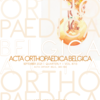Concomitant ipsilateral acetabular and femoral fractures – an appraisal of outcomes and complications in 34 patients
floating hip ; acetabular fracture ; pelvis fracture ; femoral fracture ; floating injuries
Published online: Nov 22 2021
Abstract
Concomitant ipsilateral femoral and acetabular fractures are complex injuries which result from high-velocity trauma. Surgical treatment is the accepted management of such injuries. The objectives of this study were to evaluate the outcomes and study the complications in patients treated for concomitant ipsilateral acetabular and femoral fractures (type ‘B’ floating hip injuries).
This retrospective study was conducted at a tertiary care teaching hospital on patients operated for type B floating hip injuries, who had completed a minimum of one-year follow-up after the surgery and whose complete records were available. Those with floating hip injuries with pelvic fractures were excluded. All patients were operated on the femoral side first, followed by the acetabular side.
34 patients were included ; most of them were young males. A road traffic accident was the most common mode, with a dashboard injury being the most common mechanism of injury. No association between the type of acetabular and femoral fractures was found. The clinical (measured with Harris hip score) and radiological (Matta’s method) outcomes at the latest follow-up were excellent or good in >60% cases and had a significant association with the quality of reduction on the post-operative radiographs. Com- plications were seen in 12 out of the 34 patients.
Type B floating hips injuries can be managed well with acceptable short-term results by following a femur first strategy. However, patients must be informed of the possible complications and the probabilities of poorer outcomes when compared to isolated acetabular or femoral fractures.
